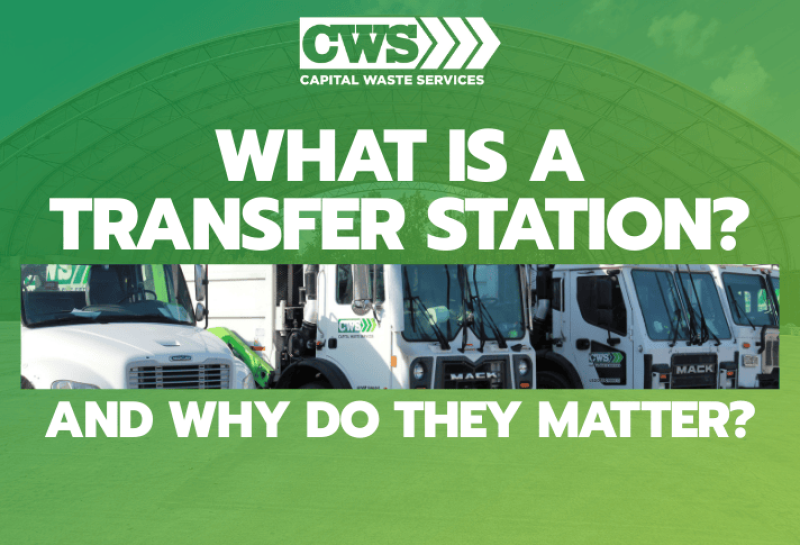
When it comes to waste management, efficiency and sustainability are key. That’s where a transfer station comes in. At Capital Waste Services (CWS), our transfer stations play a crucial role in keeping your community clean, safe, and environmentally responsible. But what exactly is a transfer station, and why should you care?
Defining a Transfer Station
A transfer station is a facility where waste is temporarily held before being transported to its final destination, such as a landfill, recycling center, or waste-to-energy plant. Instead of garbage trucks traveling long distances to disposal sites, they can drop their loads at a transfer station. From there, larger, more efficient vehicles carry the waste in bulk.
Think of it as a central hub in the waste management process.
How It Works
- Collection trucks drop off waste – Local garbage and recycling trucks bring in materials collected from homes, businesses, and construction sites.
- Sorting and consolidation – Waste may be sorted for recyclables, hazardous materials, or other special handling before being loaded.
- Bulk transport – Larger tractor-trailers or specialized vehicles then move the waste to its end facility, reducing fuel use and road congestion.
Benefits of Transfer Stations
- Efficiency: Fewer trips to distant landfills save time and fuel.
- Lower Costs: Bulk hauling reduces transportation expenses, keeping services affordable.
- Environmental Impact: Less fuel consumption means reduced greenhouse gas emissions.
- Community Cleanliness: Transfer stations provide a safer, cleaner way to manage high volumes of waste.
Why They’re Important for Your Community
Without transfer stations, waste management would be more expensive, less efficient, and harder on the environment. By streamlining the process, transfer stations help CWS deliver on our promise: reliable, cost-effective, and community-focused waste solutions.